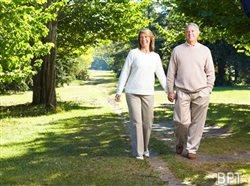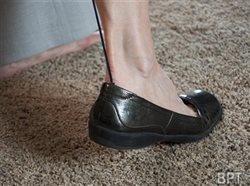(BPT) – Did you know a stroke occurs every 40 seconds on average? About 795,000 Americans suffer a new or recurrent stroke each year, according to the American Stroke Association. If you or a loved one has survived a stroke, recovery depends largely on the severity of the brain damage. With love, support and patience, the journey toward a new normal can begin.
 A stroke is life changing for the patient as well as his or her support network. Some people make a full recovery, while others suffer from various disabilities. In addition to working closely with a doctor through a personalized recovery program, joining a support group is a great initial step. When coping with the aftermath of a stroke, it can help to be surrounded by others with similar experiences. Some difficult parts of stroke rehabilitation may include:
A stroke is life changing for the patient as well as his or her support network. Some people make a full recovery, while others suffer from various disabilities. In addition to working closely with a doctor through a personalized recovery program, joining a support group is a great initial step. When coping with the aftermath of a stroke, it can help to be surrounded by others with similar experiences. Some difficult parts of stroke rehabilitation may include:
Life after stroke: Communication challenges
Difficulties communicating can be some of the most frustrating effects of stroke. Depending on where the brain is damaged, it’s not uncommon to suffer partial or total loss of the ability to talk, read, write or understand what people say. It’s important to be patient and stay positive.
Make it a goal to practice communicating at least once a day. Relax, take your time and use communication aids as necessary, like cue cards. Using fewer words paired with gestures or tone of voice can help streamline communication. Many people benefit from speech and language therapy.
Family and friends need to remember that improving communication skills engages stroke survivors so they feel more connected and less isolated, an important part of rehabilitation.
Life after stroke: Physical movement
Getting out of the house and being able to move independently provides a sense of freedom during recovery. Many stroke survivors regain the ability to walk, but may suffer from side effects that make it more difficult. Foot drop is a common side effect, which means difficulty lifting the front of the foot when walking, so much so that it may drag, which can be a tripping hazard.
Foot drop may be a temporary or permanent condition caused by stroke. The good news is there are options to help. Vibration therapy provided through affordable products like the Step Sensor by Brownmed can help increase mobility and retrain muscles and nerves in the leg and foot to respond as they should while walking.
Unlike traditional ankle-foot orthoses that are big and bulky, the Step Sensor is comfortable and discreet to wear under slacks. It works like some more dynamic Foot Drop Stimulators, without the costly doctor-led training or required weekly follow-ups. Simply adhere the pressure switch to the insole of your shoe, beneath your heel, and wrap the vibrating band around your leg just below the knee. A gentle vibration will occur when your heel strikes the ground, providing a subtle, yet effective, reminder to lift your toe. What’s more, the Step Sensor provides only topical vibration, so it’s even safe to use if you have a pacemaker or other cardiac conditions. Learn more at www.brownmed.com.
Life after stroke: Emotional adjustment
 When adjusting to life after a stroke, survivors often experience a flood of emotions. Grieving for loss of physical and mental abilities is normal and a healthy part of the adjusting process. But when normal sadness continues for extended periods, it can turn into depression and needs to be treated immediately by a mental health professional.
When adjusting to life after a stroke, survivors often experience a flood of emotions. Grieving for loss of physical and mental abilities is normal and a healthy part of the adjusting process. But when normal sadness continues for extended periods, it can turn into depression and needs to be treated immediately by a mental health professional.
Stroke survivors also often feel anxiety. Extreme worry or fear can cause restlessness, fatigue, muscle tension, poor concentration and irritability. Both depression and anxiety are common for stroke survivors. The good news is they can be treated, and there are many coping mechanisms, so be sure to ask your doctor.
Whether adjusting to physical impairments or the emotions of suffering from a major health scare, it’s important to remain positive. Loved ones are a crucial part of rehabilitation and can provide support when it is needed most. It might take years to adjust to a new normal after a stroke, both for the victim and the families, but patience and love can help ensure a speedier recovery for everyone.


